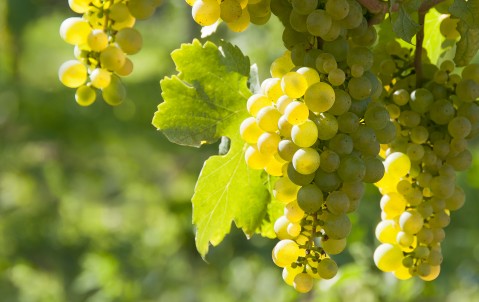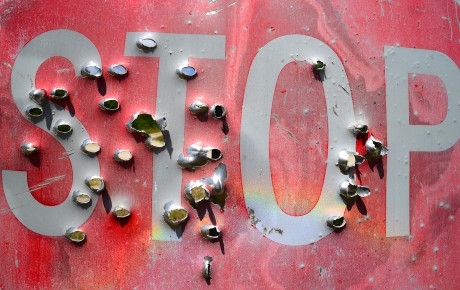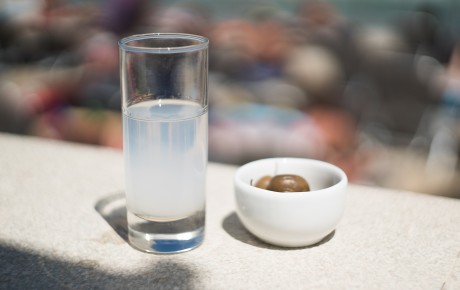
Grape discovery
Going off the well-worn wine trail can set you on a path to wonderful revelations.
Which country drinks the most wine? It surely must be France, just as eggs are eggs, I hear many of you cry. But, others, probably the underwriters among you, will think that’s a far too obvious answer and will search for a dark horse: Italy, or maybe even Germany. But you’d all be wrong. You’d probably never guess.
It is in fact the Vatican City, where each resident drinks over 54 litres of wine a year, according to statistics from the Wine Institute, suggesting their abstinence in certain earthly pleasures might be more than made up for in others.
Andorra, the tiny enclave nestled in the Pyrenees between France and Spain, is a surprising second. It could be the clear mountain air, the outdoor pursuits or its tax haven status (meaning its residents have a fair amount of cash to splash on vino) that makes them so thirsty. France comes in only fifth, its people drinking 42.5 litres a year per (relatively clear) head. It lags behind Croatia and Slovenia, which is a sobering thought.
It isn’t just some of the world’s biggest wine-drinking places that will surprise you. There are some delicious wines being produced in countries you wouldn’t readily associate with winemaking.
Each resident [in the Vatican City] drinks over 54 litres of wine a year...suggesting their abstinence in certain earthly pleasures might be made up for in others.
Croatia makes some highly creditable wines, which are much easier to drink than they are to pronounce. Some read like a Countdown challenge gone terribly awry: all consonants and no vowels, such as Grk, a dry white wine with hints of pepper and pear.
Uruguay is a much less-heralded wine producer than its far larger neighbour Argentina, but its wines are a lovely surprise, says wine critic Hugh Johnson, who cheerfully admits that 40 years ago he didn’t even know where the country was, let alone that it made wine.
(I’m a Johnson devotee, by the by. Not only does he have an acute understanding of the wine world, he is also blessed with the clearest and crispest of writing styles. His pocket wine book is the essential guide – no ifs or buts.)
I have once again, and all too willingly, put my liver on the line for this column. I tried five wines from unheralded wine countries, harvested from the shelves of M&S and Waitrose. My selection included two excellent wines, one that was so-so and two duds.
Slovenia
For a country that isn’t much bigger than the combined size of Yorkshire and Lancashire, Slovenia has over 22,000 hectares of vineyards, producing a wide variety of mostly white wines – from Sauvignon Blancs to Pinots, Rieslings and Traminers – as well as some reds.
I began my vinicultural expedition with a 2017 Sauvignon Blanc/Pinot Grigio blend by Puklavec & Friends (Waitrose, £8.79) from the hills of Jeruzalem in Eastern Slovenia. I only managed one glass, however. I found it cloying and the dominating Sauvignon Blanc grape slightly sickly. It hung around in my mouth like an unwelcome guest at the end of a party.
For a country that isn’t much bigger than the combined size of Yorkshire and Lancashire, Slovenia has over 22,000 hectares of vineyards.
The 2016 Cabernet Sauvignon/Merlot blend, also from Puklavec & Friends (Waitrose, £8.79) was a much better experience. This comes from vines “in close neighbourhood of our vineyards” but is listed as being produced in the Republic of Macedonia. This is stretching the definition of close neighbour given that to get to Slovenia from Macedonia you would need to go through Albania, Montenegro, Bosnia Herzogovina as well as Croatia. But, regardless of its slightly dubious geography, it was delicious: fresh and fruity and I happily polished off the bottle.
Romania
Perhaps handicapped by its association with a widow-peaked, nocturnal aristocrat with a penchant for very heavy reds, Romania actually has more land given over to wine cultivation than Australia, South Africa or Chile, and Jancis Robinson is very upbeat about the country’s wines.
Romania has more land given over to wine cultivation than Australia, South Africa or Chile, and Jancis Robinson is very upbeat about the country’s wines.
I tried a 2017 Pinot Grigio from Martisor (Waitrose, £7.49). This started off light in the mouth and I thought: “ho hum another bland Pinot Grigio.” But it then turned a little nasty with a sharpness and acidity that I didn’t like. It was a bit like stroking a sweet puppy that suddenly turns round and bites you. I managed only one glass of this before I had this one humanely put down – the sink.
Bulgaria
Continuing my trek around the wines of former communist countries, I next had a 2016 Shiraz from the Zagreus winery in Southern Bulgaria (Waitrose, £8.79). This was big and ripe, as you would expect from a Shiraz but was also pretty heavy and blunt. I managed to quaff half a bottle before I decided that I could probably live without its after-effects. On second thoughts, I guess this one is okay rather than a dud, but in using this adjective I refer to its dictionary definition: "satisfactory, but not especially good".
Georgia
Georgia is widely believed to be where wine was first produced. For that reason alone we owe the Georgians a huge debt of gratitude. But, it also has the greatest number of grape species of any country – over 500 with a staggering 40 of these varieties being used in its winemaking. Its techniques of winemaking have remained largely unchanged since long before Christ was born, with grapes, skins (and, in some cases, even stalks) being fermented and matured for several months in huge clay jars, called quevri, buried in the ground.
Georgia has the greatest number of grape species of any country – over 500 with a staggering 40 of these varieties being used in its winemaking.
I wholeheartedly applaud this ancient and refreshingly hands-off method if the 2015 Tbilvino Qvevris (Marks & Spencer, £10) I tasted is anything to go by. It is made from white Rkatsiteli grapes and I thought it tasted delicious, as well as looking more amber than you can possibly imagine. It is a genuinely different wine, no doubt as a result of its unique vinification. It reminded me a bit of a dry manazilla sherry, but with a little more fruit. This was the undoubted star of my line up and I would definitely consider getting it again.
Wine is like holidays. Everyone has their favourite destinations: the places they remember and enjoy the most, where they immediately feel comfortable. But venturing off the beaten track from time to time can work wonders, offering you new experiences that help you to look at the world a little differently. I’d recommend doing a little wine globetrotting now and then. You will turn up some hidden gems.



